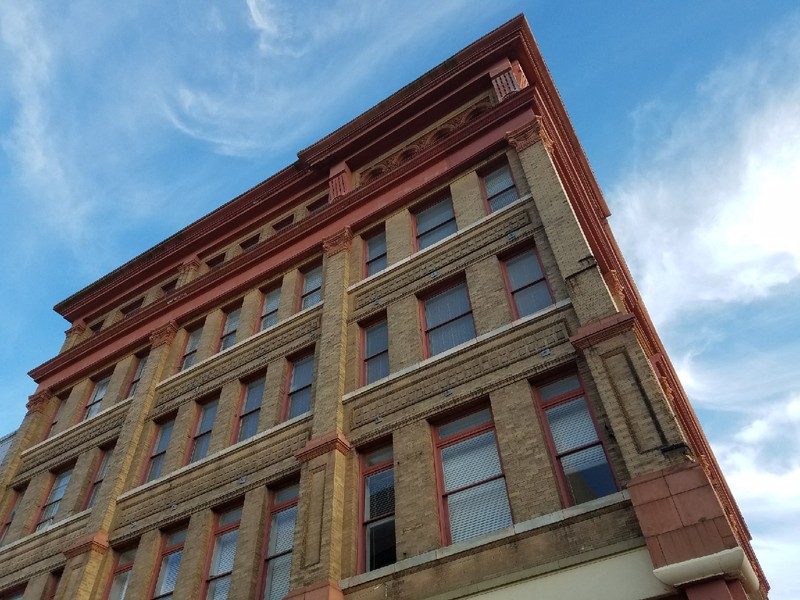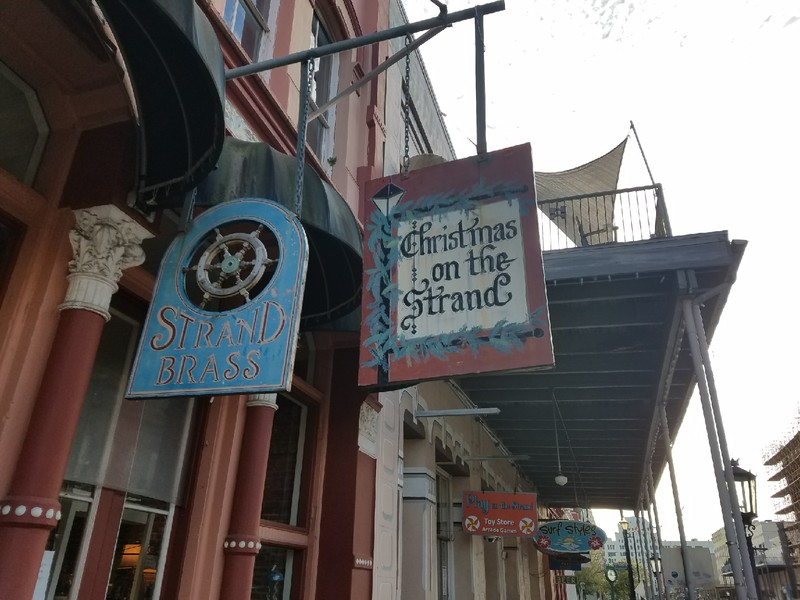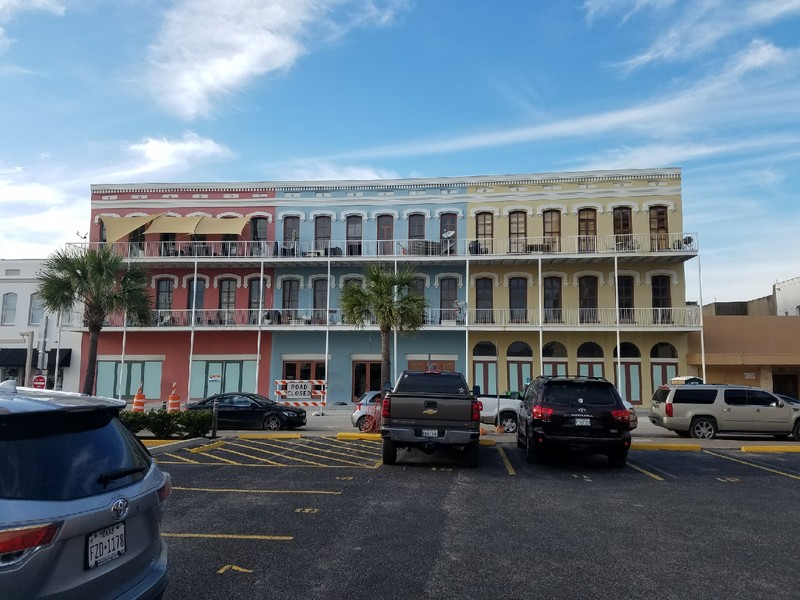The Strand Historic District
Introduction
Text-to-speech Audio
Images
The Stand Historic Building

Christmas on the Strand

Victorian Style Architecture

Backstory and Context
Text-to-speech Audio
The Strand, a great economic capital for the Southwest, helped cement Galveston as one of the most important ports in the United States. This commercial strip hosted a multitude of different businesses. These businesses contained: “…five banks, wholesale houses, grocers, liquor and cigar dealers, cotton factors, commission merchants, insurance companies, printer and eight newspapers, dry goods companies, steam and sail ship agencies, auction houses, saloons, and sailor boarding houses.” 1 For people coming into the Galveston port for trading and exporting purposes, the Strand was a convenient place to relax and wait while a trading ship loaded its cargo. This, in conjunction with the fact that the Galveston port was, “… considered the second busiest in the country behind the port of New York City,” 2 helped add to the success of the Strands development.[1] With the port of Galveston and the Strand complementing each other’s business, Galveston became “… one of the richest cities in the world per capita. It boasted being the ‘third richest city in the United States in proportion to population’.” 3 One more influential factor that added to the success of the Galveston port and [2]the Strand was the railroad system. In the 1880s, the railroads opened an opportunity for vacationers or visitors to travel to Galveston from far distances at a reasonable speed. These railroads also helped boost the economy by exporting about sixty percent of the cotton produced by Texas. Because of the huge influence of exporting cotton and other goods, the Strand was able to thrive with the amount of people coming in and out of the city and become known as the “Wall Street of the South”.
Aside from being a neat shopping area, the Strand is a beautiful district because of its old Victorian era buildings. Part of the reason the Victorian buildings on the Strand were preserved and rebuilt, was because of the “Dickens on the Strand” festival. In 1973, the Strand Historic District was nearly abandoned. According to Harvey Rice, “… the stretch was shunned by residents as a place frequented mainly by winos and derelicts.” 4 At this time, these Victorian style buildings were already beginning to be demolished and replaced with more modern buildings. If not for a group of locals, the complete annihilation of the historical buildings would have been guaranteed.
Among this group of people was Evangeline Wharton. Her influence on the preservation of the buildings, as stated by Harvey Rice, started, “… with the idea of a festival highlighting the city’s glory days during the age of Victorian author Charles Dickens – an event that would show that Galveston’s neglected downtown could become an asset to city tourism.” 5 Her idea soon came to life, as the Victorian houses started to be restored to their old luster for the event. This festival continues every year during Christmas time, when they hold many Victorian style events and festivities to celebrate and appreciate the historical district as it once used to be. [3]Although the “Dickens on the Strand” festival helped keep the historical district from being demolished, contributors such as the Mitchell family have poured a lot of money into the restoration of the historic Strand. The Mitchell Historic Properties website claims that the, “The Mitchells are committed to the overall success and revitalization of The Strand District, Pier 21 and Galveston Island. For more than 30 years, the Mitchells have invested more than $175 million in rehabilitating historic properties in The Strand National Historic Landmark District.” 6 Not only have they reinvigorated the old buildings, they have also invested a lot of money into disaster relief. One example of this is as stated on their website: “Immediately following Hurricane Ike which struck Galveston on Sept. 12, 2008, MHP launched a massive cleanup and restoration program in downtown Galveston. Estimates by staff put the coast of disaster relief, cleanup and building renovation at more than $24 million on more than 20 buildings.” 7 This support from community members has helped keep the idea of the Victorian era alive through the Strand Historic District.[4]
Today, the Strand is still a popular tourist attraction that contains a variety of shops and restaurants for visitors to soak in the history of the island. Although the Strand may seem like another outdoor strip center, many locations in the world, let alone the United States, have a designated district that supports the Victorian era architecture. Even though it has been an integral part for some people’s day to day lives, the natives of Galveston still frequent the Strand just for its architectural beauty and the sea breeze. The Strand is the perfect example of a community’s drive to preserve historical monuments and buildings to show off a greater purpose.
Sources
“Galveston Strand Historic District.” Mitchell Historic Properties. Accessed March 7, 2018. https://www.mitchellhistoricproperties.com/history/strand-district/.
Rod, Evans. “The Port of Galveston Continues to Make History on Galveston Island,” It’s Island Time (blog), Galveston.com, January 30, 2017, https://www.galveston.com/blog/488/the-port-of-galveston-continues-to-make-history-on-galveston-island/.
Rice, Harvey. “How Dickens saved Galveston.” Houston Chronicle. December 5, 2014. Accessed March 7, 2018. https://www.houstonchronicle.com/news/houston-texas/texas/article/How-Dickens-saved-Galveston-s-history-5938616.php#photo-7234857.
“About Mitchell Historic Properties.” Mitchell Historic Properties. Accessed March 8, 2018. https://www.mitchellhistoricproperties.com/about/.
1 “Galveston Strand Historic District.” Mitchell Historic Properties. Accessed March 7, 2018. https://www.mitchellhistoricproperties.com/history/strand-district/.
2 Rod, Evans. “The Port of Galveston Continues to Make History on Galveston Island,” It’s Island Time (blog), Galveston.com, January 30, 2017, https://www.galveston.com/blog/488/the-port-of-galveston-continues-to-make-history-on-galveston-island/.
3 “Galveston Strand Historic District.” Mitchell Historic Properties. Accessed March 7, 2018. https://www.mitchellhistoricproperties.com/history/strand-district/.
4, 5 Rice, Harvey. “How Dickens saved Galveston.” Houston Chronicle. December 5, 2014. Accessed March 7, 2018. https://www.houstonchronicle.com/news/houston-texas/texas/article/How-Dickens-saved-Galveston-s-history-5938616.php#photo-7234857.
6, 7 “About Mitchell Historic Properties.” Mitchell Historic Properties. Accessed March 8, 2018. https://www.mitchellhistoricproperties.com/about/
